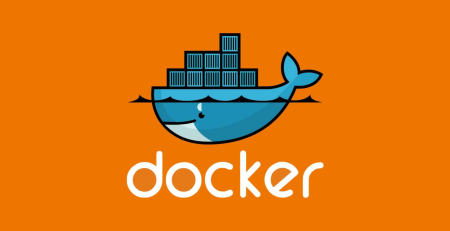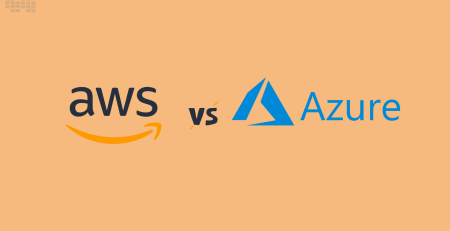What Is AWS Serverless Architecture?
What is AWS serverless architecture, you might wonder if you’re interested in developing apps. Cloud app development has been transformed by the HiTech innovation known as serverless architecture. Although AWS does not exclusively specialize in serverless architectures, it probably has the widest range of products thanks to its AWS services. As a result, AWS is frequently brought up when talking about serverless architectures.
This article will define serverless architecture and discuss its advantages. In order to provide your company with a comprehensive understanding of this method for developing mobile and web apps, we will also discuss some of the main difficulties related to serverless architecture. Nowadays, serverless computing is very popular, and for good reason. Smart companies will carefully consider this strategy to determine if it is the best option for their applications.
Serverless Architecture: What Is It?
You probably have no idea what architecture is in relation to app development unless you are well-versed in software development. Servers, storage systems, and databases are necessities for all websites, web apps, and mobile apps. These features of an application are essential for it to work. However, it takes time and technical know-how to maintain servers, databases, and other systems.
Additionally, companies must make sure they have enough server and database resources to meet user demands. The application crashes when server resources are overloaded by user demand. As a result, supporting and maintaining application infrastructure is a necessary but time-consuming task.
A novel method for creating and deploying applications is called serverless architecture. Developers use a service provider to run their applications on the cloud rather than provisioning servers, databases, etc. A provider like AWS is in charge of provisioning and maintaining servers and other services in the serverless architecture approach.
As a result, development teams are free to concentrate solely on creating new services and applications without having to worry about the time-consuming task of provisioning and maintaining servers. Serverless computing essentially allows development teams to delegate time-consuming but necessary work to a cloud services provider like AWS.
A cloud-based service, this is what AWS serverless architecture is. Your company needs to be aware that there are other companies offering serverless architecture besides AWS. Serverless computing services are also provided by Google, Microsoft, and others. But compared to other options, AWS offers more services and capabilities. Over 100 different AWS services can be used by your development team to create cutting-edge applications.
The Benefits of Serverless Architecture
Because of the unmatched capabilities they provide, serverless architectures have become increasingly popular. Today, both big and little companies are using the special advantages of serverless computing to advance their commercial goals. The following are some of serverless architecture’s top advantages:
- Scalability
- Cost savings
- Productivity
Scalability
Scalability in serverless architecture is flexible. Is your application ready for a spike in traffic or users? When demand increases, your company will need to provision more server resources if your application uses a conventional server architecture. What happens, though, if demand for your application changes? Then, when demand exceeds your server’s capacity, you can either pay for server resources you won’t fully utilize or you can let your app crash.
Serverless architectures scale up and down automatically to satisfy demand in real-time. Your business can be sure that it will always have the appropriate number of server resources to meet user demand when using a serverless architecture because you won’t be spending money on resources that won’t be used.
Cost Savings
Organizations use serverless architecture to significantly reduce costs because they only pay for the resources they actually use. Never will your company overpay for server resources that aren’t being used. All cloud service providers, including AWS, levy fees based on usage. Make sure you have everything your application needs, and avoid paying for resources you won’t use.
There aren’t many services out there that give businesses this kind of deal. Additionally, organizations can reduce costs while always having enough resources to meet the actual demand of their audience thanks to serverless architecture’s rapid scalability.
Productivity
It is simple to overlook increased productivity when talking about cost savings and scalability. However, one of the biggest advantages of serverless architecture is a rise in development productivity. No longer are developers required to spend time provisioning and maintaining server hardware. They can now devote more time to developing cutting-edge new services and applications for your company.
The value of extra time is difficult to quantify. With serverless computing services, your company is still able to meet user demand in real time and save money on resources even if your team is unable to create any new app ideas or services with the extra time they will have.
The Challenges of Serverless Architecture
Even though serverless architecture seems like a no-brainer after reading the advantages, your company should think about some drawbacks with this strategy before making a decision. These drawbacks include:
- Loss of control
- Vendor lock-in
- Security
Loss of Control
You also relinquish control when you delegate tasks to a service provider. Your application might be impacted, for instance, if your cloud service provider experiences a hardware problem or a data center outage, and your team will be powerless to prevent it. Your organization depends on the provider to keep your application and services online if you choose the serverless architecture approach. Although outages are rare, it can be very frustrating for your team to be powerless in the event that one occurs.
Vendor Lock-In
Although you could theoretically select a different vendor for each service, vendors design their services to integrate easily with one another. AWS and other vendors provide a wide range of additional cloud services. Relying on serverless architecture can cause your company to quickly become dependent on one service provider for all needs. Since AWS provides over 100 different cloud services, some businesses might not want to be tied to a single vendor, even though this is great for businesses.
Security
Serverless architectures will give your company less control over security. Normally, this is not a big deal, but occasionally, it can jeopardies your organization’s data. Your data may be exposed, for instance, if other apps are running on the same server as your app and it is configured incorrectly. Although AWS and other service providers go to great lengths to maintain security, errors can occur and your team has no real power to enforce security.
Conclusion
Serverless architectures give companies a lot of freedom and control. Before making a decision this important, there are a few obstacles to take into account. Contact a skilled app development partner if you want to learn more about serverless architecture and the services that are available to your company. We hope that this post has clarified what AWS serverless architecture is and given your company some food for thought.













Leave a Reply